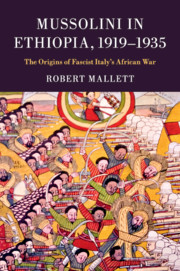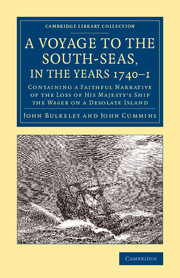Refine search
Actions for selected content:
15418 results in Military history
1 - Balance of capability
-
- Book:
- The Search for Tactical Success in Vietnam
- Published online:
- 05 August 2015
- Print publication:
- 08 September 2015, pp 7-32
-
- Chapter
- Export citation
Notes
-
- Book:
- The Search for Tactical Success in Vietnam
- Published online:
- 05 August 2015
- Print publication:
- 08 September 2015, pp 263-290
-
- Chapter
- Export citation
Bibliography
-
- Book:
- The Search for Tactical Success in Vietnam
- Published online:
- 05 August 2015
- Print publication:
- 08 September 2015, pp 291-297
-
- Chapter
- Export citation
Maps
-
- Book:
- The Search for Tactical Success in Vietnam
- Published online:
- 05 August 2015
- Print publication:
- 08 September 2015, pp x-x
-
- Chapter
- Export citation
Figures
-
- Book:
- The Search for Tactical Success in Vietnam
- Published online:
- 05 August 2015
- Print publication:
- 08 September 2015, pp vii-ix
-
- Chapter
- Export citation
Abbreviations
-
- Book:
- The Search for Tactical Success in Vietnam
- Published online:
- 05 August 2015
- Print publication:
- 08 September 2015, pp xvi-xviii
-
- Chapter
- Export citation
8 - Mine warfare
-
- Book:
- The Search for Tactical Success in Vietnam
- Published online:
- 05 August 2015
- Print publication:
- 08 September 2015, pp 178-189
-
- Chapter
- Export citation
About the authors
-
- Book:
- The Search for Tactical Success in Vietnam
- Published online:
- 05 August 2015
- Print publication:
- 08 September 2015, pp xiii-xiii
-
- Chapter
- Export citation
Frontmatter
-
- Book:
- The Search for Tactical Success in Vietnam
- Published online:
- 05 August 2015
- Print publication:
- 08 September 2015, pp i-iv
-
- Chapter
- Export citation
10 - The combat effectiveness of 1ATF
-
- Book:
- The Search for Tactical Success in Vietnam
- Published online:
- 05 August 2015
- Print publication:
- 08 September 2015, pp 214-230
-
- Chapter
- Export citation
Conclusion
-
- Book:
- The Search for Tactical Success in Vietnam
- Published online:
- 05 August 2015
- Print publication:
- 08 September 2015, pp 252-256
-
- Chapter
- Export citation

Mussolini in Ethiopia, 1919–1935
- The Origins of Fascist Italy's African War
-
- Published online:
- 05 September 2015
- Print publication:
- 03 September 2015

A Voyage to the South-Seas, in the Years 1740–1
- Containing a Faithful Narrative of the Loss of His Majesty's Ship the Wager on a Desolate Island
-
- Published online:
- 05 September 2015
- Print publication:
- 27 April 2015
- First published in:
- 1743

Napoleon in Exile
- Or, A Voice from St. Helena: The Opinions and Reflections of Napoleon on the Most Important Events of his Life and Government in his Own Words
-
- Published online:
- 05 September 2015
- Print publication:
- 26 March 2015
- First published in:
- 1822

Napoleon in Exile
- Or, A Voice from St. Helena: The Opinions and Reflections of Napoleon on the Most Important Events of his Life and Government in his Own Words
-
- Published online:
- 05 September 2015
- Print publication:
- 26 March 2015
- First published in:
- 1822
Copyright page
-
- Book:
- Mussolini in Ethiopia, 1919–1935
- Published online:
- 05 September 2015
- Print publication:
- 03 September 2015, pp iv-iii
-
- Chapter
- Export citation
5 - Containing the Führer
-
- Book:
- Mussolini in Ethiopia, 1919–1935
- Published online:
- 05 September 2015
- Print publication:
- 03 September 2015, pp 72-93
-
- Chapter
- Export citation
3 - The Darkening Horizon 1929–1932
-
- Book:
- Mussolini in Ethiopia, 1919–1935
- Published online:
- 05 September 2015
- Print publication:
- 03 September 2015, pp 33-51
-
- Chapter
- Export citation
Dedication
-
- Book:
- Mussolini in Ethiopia, 1919–1935
- Published online:
- 05 September 2015
- Print publication:
- 03 September 2015, pp iv-v
-
- Chapter
- Export citation
8 - Facing Down the British
-
- Book:
- Mussolini in Ethiopia, 1919–1935
- Published online:
- 05 September 2015
- Print publication:
- 03 September 2015, pp 154-186
-
- Chapter
- Export citation
